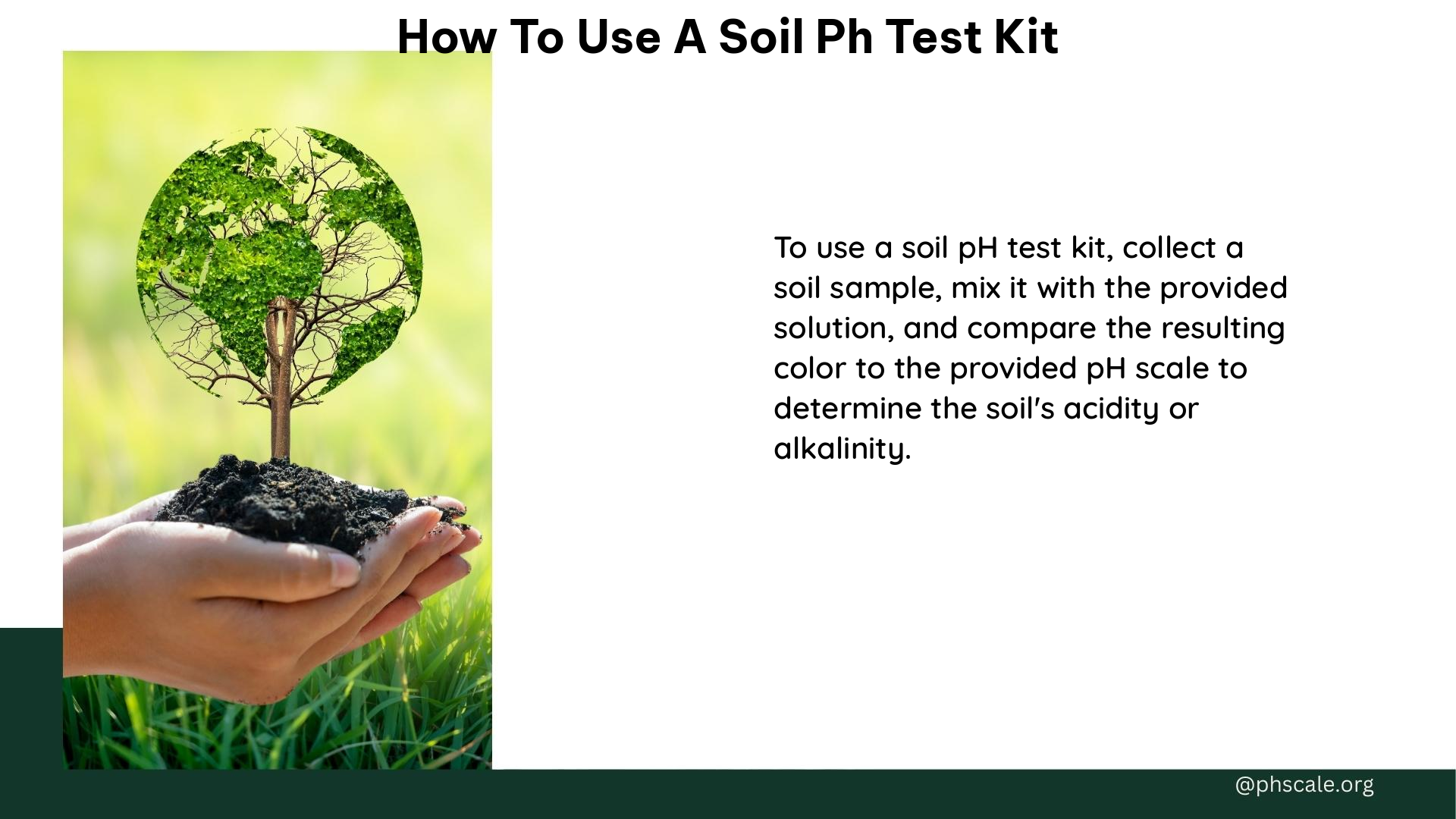Maintaining the right soil pH is crucial for the health and growth of your plants. A soil pH test kit allows you to easily determine the acidity or alkalinity of your soil, enabling you to make informed decisions about soil amendments and plant selection. In this comprehensive guide, we’ll walk you through the step-by-step process of using a soil pH test kit to ensure your garden thrives.
Collecting the Soil Sample
The first step in using a soil pH test kit is to collect a representative soil sample from your garden or lawn. Follow these guidelines:
- Dig a small hole about 6-8 inches deep in the area you want to test.
- Remove the top inch of soil and loosen the soil to a depth of approximately 6 inches.
- Take a small sample of the loosened soil, making sure to exclude any rocks, roots, or vegetation.
Preparing the Soil Sample

Once you have your soil sample, it’s time to prepare it for testing. Here’s what you need to do:
- In a small container, mix 1-2 tablespoons of the soil sample with 1-2 tablespoons of distilled water.
- Stir the mixture well and let it sit for 20-30 minutes, allowing the water to absorb and the soil to settle.
Testing the Soil pH
Now that you have your soil-water mixture ready, it’s time to use the pH test strips or pH meter included in your soil pH test kit. Here’s how to proceed:
Using pH Test Strips
- Dip the test strip into the soil-water mixture for 3 seconds.
- Shake the strip vigorously to remove any soil residue.
- Wait for 1-2 minutes, then compare the color on the strip to the reference chart provided with the kit to determine the pH level.
Using a pH Meter
- Insert the pH meter’s probe directly into the damp soil.
- Wait for about a minute for the meter to stabilize and display the pH reading.
Interpreting the Results
Once you have your pH reading, it’s time to interpret the results and determine if any adjustments are needed. Here’s a general guide:
- Ideal pH range for most plants: 5.5 to 7.0 (neutral)
- pH below 5.5: Acidic soil
- pH above 7.0: Alkaline soil
If the pH is outside the ideal range, you may need to amend the soil with lime (to raise the pH) or sulfur (to lower the pH).
Repeating and Averaging the Measurements
To ensure accurate results, it’s recommended to take multiple readings from different areas of your garden or lawn. This will give you a more comprehensive understanding of your soil’s pH levels. Once you have the readings, calculate the average to get a reliable pH value for your soil.
Conclusion
Using a soil pH test kit is a simple and effective way to monitor and manage the pH levels in your garden or lawn. By following the steps outlined in this guide, you can easily determine the acidity or alkalinity of your soil and make the necessary adjustments to create the optimal growing conditions for your plants. Remember, regular soil testing is the key to maintaining a healthy, thriving garden.
Reference:
– Soil pH and Plant Growth
– How to Test Soil pH
– Adjusting Soil pH
